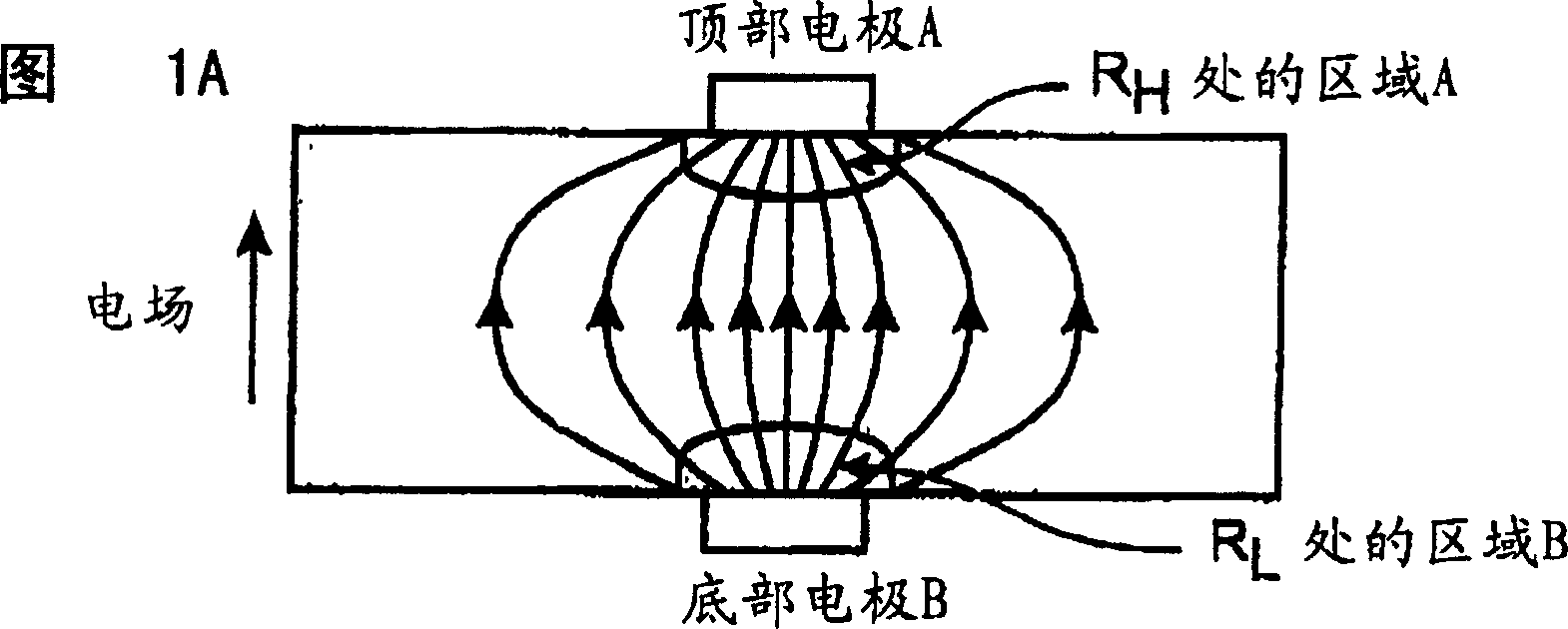Asymmetric memory cell
A storage unit, asymmetric technology, applied in the direction of information storage, static memory, digital storage information, etc., can solve the problems of impracticality, storage unit not working normally, process tolerance sensitivity and other problems
- Summary
- Abstract
- Description
- Claims
- Application Information
AI Technical Summary
Problems solved by technology
Method used
Image
Examples
Embodiment Construction
[0016] 1A and 1B are partial cross-sectional views of memory cells during program (FIG. 1A) and erase (FIG. 1B) operations. The top and bottom electrodes are identical, and the storage resistor material is uniform throughout. If the device geometry can be made quite symmetrical, the net resistance will remain constant in the high resistance state when a negative electric field (Fig. 1A) or a positive electric field (Fig. 1B) is applied. Note that the electric field direction is determined with respect to the top electrode. That is, an electric field is believed to be induced from the top electrode. In this case, no programming is possible. Therefore, geometrically symmetric device structures, such as those shown in Figures 1A and 1B, are not practical.
[0017] More specifically, in the presence of an electric field, the geometrically symmetric memory cell has a high current density near the electrodes (regions A and B) and a low current density in the central part of the d...
PUM
 Login to View More
Login to View More Abstract
Description
Claims
Application Information
 Login to View More
Login to View More - R&D
- Intellectual Property
- Life Sciences
- Materials
- Tech Scout
- Unparalleled Data Quality
- Higher Quality Content
- 60% Fewer Hallucinations
Browse by: Latest US Patents, China's latest patents, Technical Efficacy Thesaurus, Application Domain, Technology Topic, Popular Technical Reports.
© 2025 PatSnap. All rights reserved.Legal|Privacy policy|Modern Slavery Act Transparency Statement|Sitemap|About US| Contact US: help@patsnap.com



